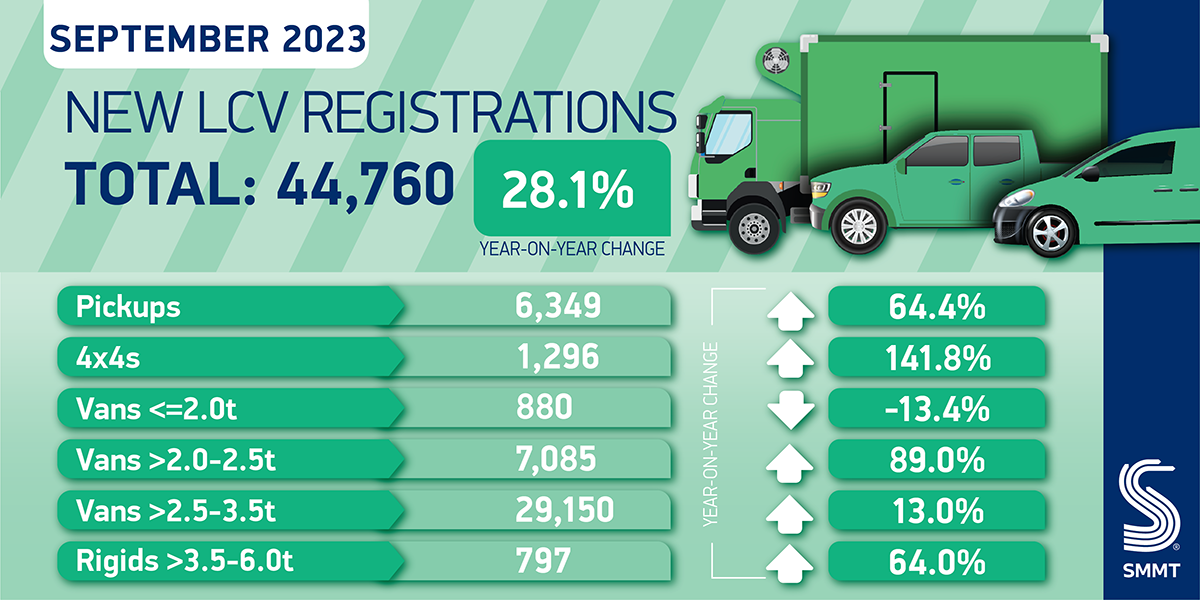- UK new light commercial vehicle market rises for ninth month running, up 28.1% to 44,760 units in September.
- Large vans remain most popular, up 13.0%, but medium-sized vans drive growth, increasing by 89.0%.
- Electric van uptake rises 85.9% to 2,882 units but chargepoint rollout must consider specific van needs to scale up emerging market.
SEE LCV REGISTRATIONS BY BRAND
DOWNLOAD PRESS RELEASE AND DATA TABLE

Britain’s new light commercial vehicle (LCV) market grew for the ninth month in a row in September, up 28.1% with 44,760 of the latest vans, pickups and 4x4s joining UK roads, according to the latest figures published today by the Society of Motor Manufacturers and Traders (SMMT). One of the most popular months for new van purchases, plate change September saw robust demand round off 20.8% growth in the year to date, with 257,979 units registered in the first nine months.

Operators continue to opt for payload and fuel efficiencies, with the largest vans – weighing greater than 2.5 tonnes to 3.5 tonnes – remaining the biggest market for new buyers in September, rising 13.0% to 29,150 units. Medium-sized vans also saw significant growth, up 89.0% to 7,085 units, while demand for pickups and 4x4s increased by 64.4% and 141.8% respectively. Deliveries of the smallest vans, meanwhile, fell -13.4% to 880 units.

The Plug-in Van Grant, competitive running costs and increasing model choice continued to boost demand for battery electric vans (BEVs) in September, with deliveries up 85.9% to 2,882 units – accounting for one in 16 new vans registered in the month. With 25 zero emission van models now available in the UK, these vehicles already carry out a wide range of roles for operators, from local businesses to some of the country’s largest organisations.

As a result, a UK record 14,296 electric vans have been registered since January, commanding 5.5% of the overall market. As manufacturers now face new zero emission van sales quotas starting at 10% in January, however, there is a clear need for a national plan that gives more van operators the confidence to make net zero investments. In particular, public charging infrastructure must be suitable for vans of all shapes and sizes so that van drivers – like their passenger car counterparts – can realise the full benefits of zero emission motoring.


Mike Hawes, SMMT Chief Executive, said,
Vans are irreplaceable workhorses that keep Britain on the move, so a bumper September capping nine months of growing fleet renewal is good news for the economy, the environment and society. Decarbonising this sector is fundamental to the wider net zero transition and, as vans are business critical, urgent measures are needed to grow operator confidence to invest now, in 2024 and beyond. In particular, the specific needs of van operators must be considered when planning public charging strategies.
